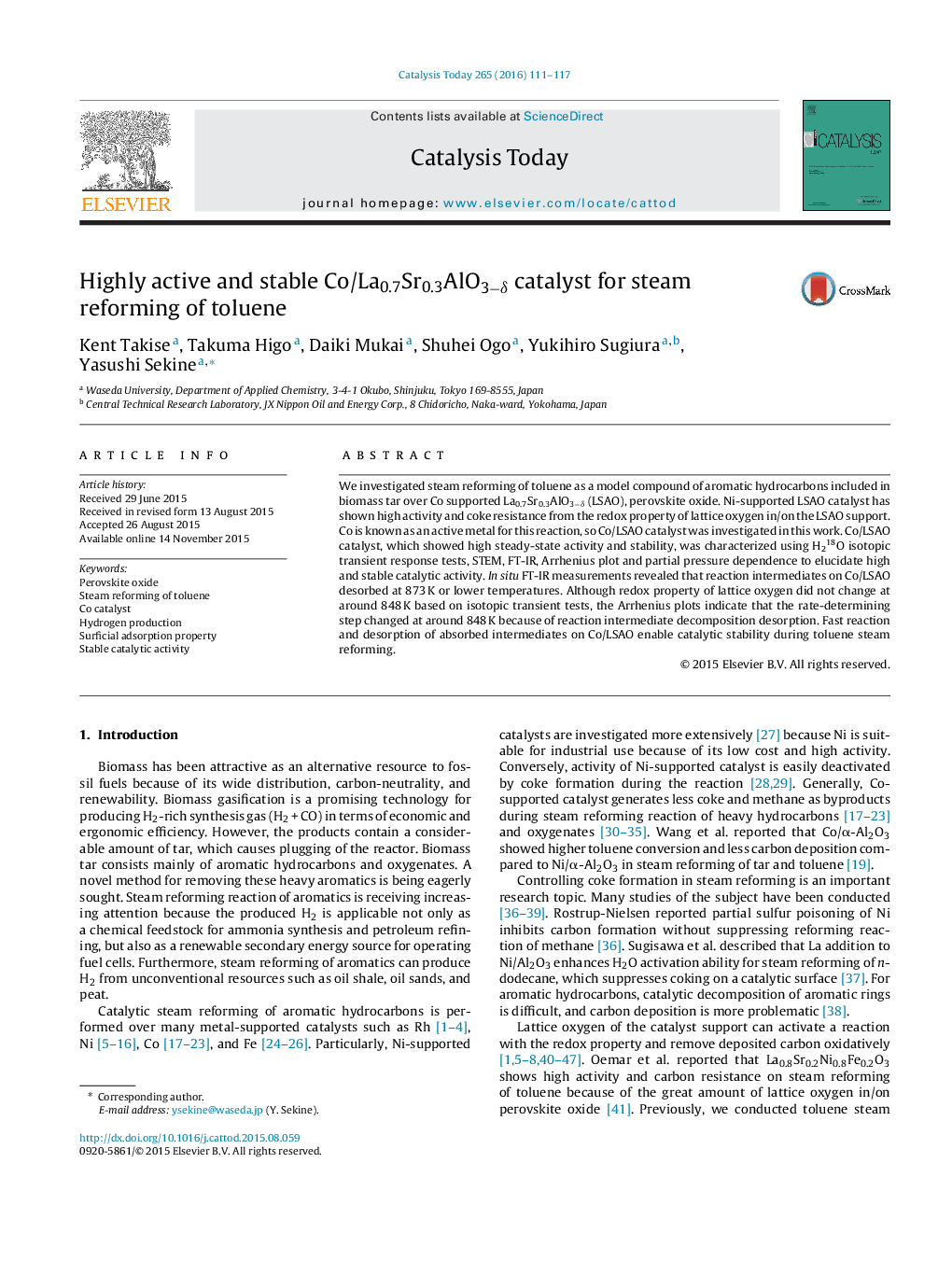| Article ID | Journal | Published Year | Pages | File Type |
|---|---|---|---|---|
| 53793 | Catalysis Today | 2016 | 7 Pages |
•Steam reforming of toluene as a model compound of aromatic hydrocarbons was investigated.•Co/La0.7Sr0.3AlO3−δ perovskite catalyst showed high and stable activity.•The rate-determining step changed at around 848 K relating reaction intermediate desorption.•Fast reaction and desorption of absorbed intermediates enable high catalytic activity and stability.
We investigated steam reforming of toluene as a model compound of aromatic hydrocarbons included in biomass tar over Co supported La0.7Sr0.3AlO3−δ (LSAO), perovskite oxide. Ni-supported LSAO catalyst has shown high activity and coke resistance from the redox property of lattice oxygen in/on the LSAO support. Co is known as an active metal for this reaction, so Co/LSAO catalyst was investigated in this work. Co/LSAO catalyst, which showed high steady-state activity and stability, was characterized using H218O isotopic transient response tests, STEM, FT-IR, Arrhenius plot and partial pressure dependence to elucidate high and stable catalytic activity. In situ FT-IR measurements revealed that reaction intermediates on Co/LSAO desorbed at 873 K or lower temperatures. Although redox property of lattice oxygen did not change at around 848 K based on isotopic transient tests, the Arrhenius plots indicate that the rate-determining step changed at around 848 K because of reaction intermediate decomposition desorption. Fast reaction and desorption of absorbed intermediates on Co/LSAO enable catalytic stability during toluene steam reforming.
Graphical abstractFigure optionsDownload full-size imageDownload high-quality image (182 K)Download as PowerPoint slide
